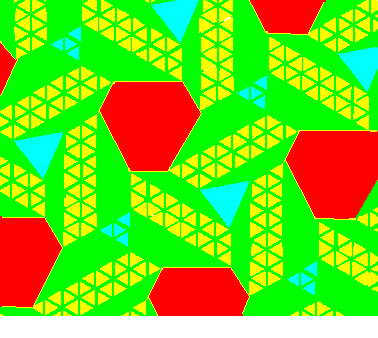| Image of front |
 |
| Image with light |
 |
| Crease pattern for 6.3.6.3 weave (without triangle grid) |
 |
| Crease pattern for 6.3.6.3 weave (with triangle grid) |
 |
The origami patterns on this page are intended to have a "woven" appearance, though they are folded from a single sheet of paper, not from strips.
|
|
|
|
If you want to crease directly from a print out, try the image without the background grid. The long, parallel creases on either sides of the "thread" of the weave, are mountain folds. All other folds are valley folds. You may want to resize the image.
For folding from unmarked paper, crease a grid of triangles into your paper, and proceed as follows, using the crease pattern with the triangle grid as a guide line.
Note that the tiling can be considered to consist of units of creases like this:
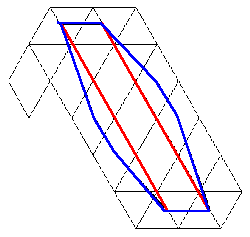
To crease a bit of "thread", work out where it's edges are, and crease them:

Next work out were the thread that passes underneath will go. Either it's there already, or this is the first "thread", and you can put it in as shown:
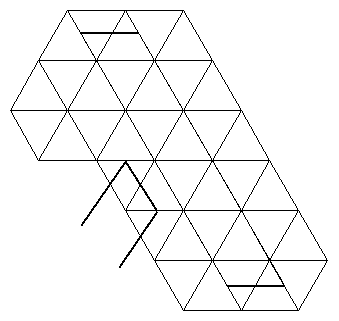
Next work out where the thread that goes under will come out the other side. You do this by imagining a line from the middle of the "under" thread, perpendicular to the new, "over" thread:
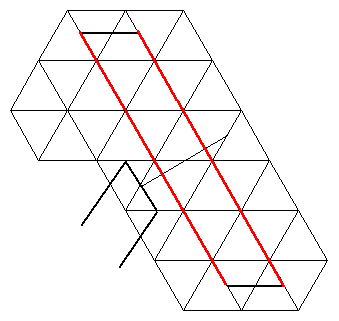
Then put a crease where the under thread comes out:

Then join the ends of these two short lines to the ends of the two parallel long lines:
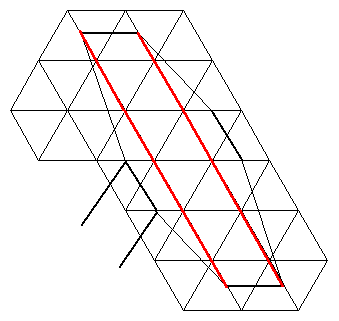
That's one bit of creasing done; carry on like that until it's all done!
The following process results in a folding pattern as above, and a continuous variation of the above.
|
| ||||||
|
| ||||||
|
|
The above process can also be applied to the square grid:
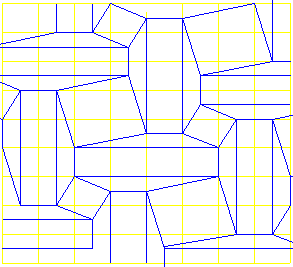
Another simple variation has 5 types of tiles and 4 types of vertices.
Here are some more:
Kawasaki Weave, simple variation 2(less) (more)
Kawasaki Weave, simple variation 3(less) (more)
This looks like it ought to be foldable, but I've not tried:
